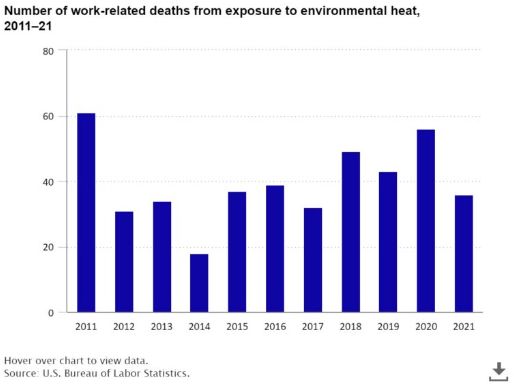Seyfarth Synopsis: The U.S. Department of Labor recently announced that OSHA has issued a heat hazard alert to "remind employers of their obligation to protect workers against heat illness or injury in outdoor and indoor workplaces." States such as Michigan, Washington, and California are tackling the issue directly by implementing heat illness prevention regulations at the state level.
In addition to its "heat hazard alert" reminding employers to implement measures to protect exposed employees from heat illness, the Department of Labor (DOL) also announced that OSHA will intensify enforcement where workers are exposed to heat hazards, with increased inspections in high-risk industries like construction and agriculture. The Agency will rely upon its National Emphasis Program on "Outdoor and Indoor Heat-Related Hazards," announced in April 2022, to focus enforcement efforts in areas and industries with the most vulnerable workers.
The reminder came as President Biden, on July 27, 2023,"announced new actions to protect workers from extreme heat and new investments to protect communities, as historically high temperatures break records and expose millions of people to the serious dangers of heat in the workplace." The White House prepared a Fact Sheet outlining the President's request that DOL and OSHA take additional steps to protect workers from heat illness. Since the President's announcement, OSHA has saturated its daily workplace safety reminders with heat-related recommendations and best practices, including an August 9 reminder that "Employers should provide cool drinking water."
In October 2021, OSHA began the rulemaking process to consider a heat-specific workplace standard by publishing anAdvance Notice of Proposed Rulemaking for Heat Injury and Illness Prevention in Outdoor and Indoor Work Settingsin the Federal Register. That regulatory process is ongoing and has not proceeded much beyond its incipient stage.
The Bureau of Labor Statistics reported 436 people have died due to workplace heat exposure, with an annual average of 38 deaths between 2011 to 2019. In addition, an average of 2,700 cases involving heat illnesses lead to days lost at work, putting an additional economic burden on workers and employers. Statistics show that people who work in conditions without adequate climate-control face higher risks of hazardous heat exposure and that these situations disproportionately expose people of color to hazardous heat.

Over the past 18 months, several states, particularly on the West Coast, have either implemented heat illness regulations or started the rulemaking process. In April 2023, California restarted a long-stalled rulemaking process to implement a revised heat illness prevention standard that will expand enforcement from outdoor industries such as agriculture and construction to include indoor heat. California's proposed rule also includes onerous requirements to utilize engineering controls to lower indoor temperatures to threshold heat levels. On July 17, 2023, Washington's new heat illness prevention regulation became effective, increasing the number of industries covered by the regulation and expanding coverage from summertime only to year-round. Oregon's new heat stress rules, covering both indoor and outdoor workplaces, took effect on June 15, 2022.
The content of this article is intended to provide a general guide to the subject matter. Specialist advice should be sought about your specific circumstances.









